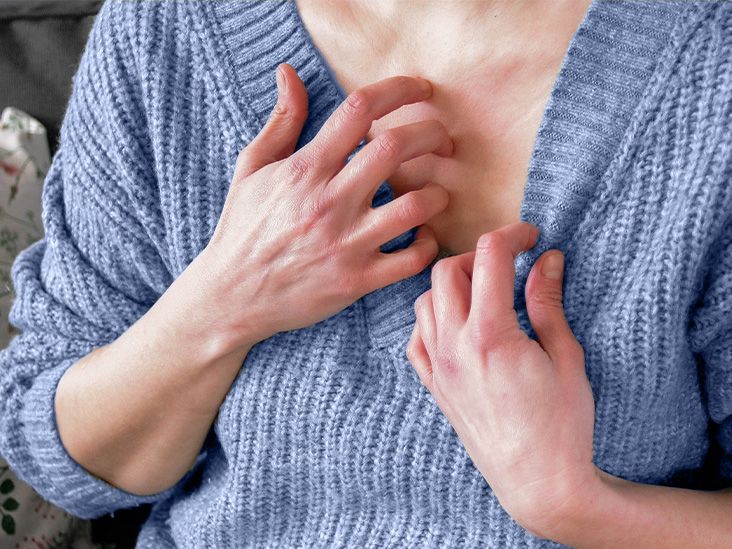Secondary dysmenorrhea is the medical term for period pain that occurs as a result of an underlying condition affecting the reproductive organs.
Secondary dysmenorrhea may cause additional symptoms such as heavy or irregular periods, bleeding between periods, and pain during intercourse.
Treatments for secondary dysmenorrhea focus on relieving the pain and improving quality of life.

Dysmenorrhea is the medical term for painful periods. There are two types of dysmenorrhea: primary and secondary.
Secondary dysmenorrhea is period pain that occurs as a result of an underlying issue with the reproductive organs,
- endometriosis
- adenomyosis
- fibroids
- endometrial polyps
- pelvic inflammatory disease
- congenital issues involving the reproductive organs
Secondary dysmenorrhea pain tends to worsen as a period progresses and may even persist once the period has ended.
Vs. primary dysmenorrhea
Primary dysmenorrhea is period pain that occurs in the absence of any underlying pelvic disease.
An increase in natural chemicals called prostaglandins shortly before and during menstruation causes the muscles and blood vessels inside the uterus to contract. This reduces blood flow to the uterus and triggers pain and discomfort.
Prostaglandin levels are highest at the start of a period and gradually decrease. As such, the pain tends to reduce after the first few days of a period. This is different from secondary dysmenorrhea, in which the pain typically worsens as the period progresses.
Symptoms of secondary dysmenorrhea may
Potential causes of secondary dysmenorrhea
- Endometriosis: Endometriosis is a condition in which tissue similar to the lining of the uterus grows outside of the uterus in areas such as the ovaries, fallopian tubes, or bladder. Hormone changes occurring during menstruation may cause the tissue to bleed, resulting in the formation of scar tissue, or adhesions. These adhesions can fuse organs together and cause pain.
- Adenomyosis: This condition involves tissue that ordinarily lines the uterus growing in the muscle wall of the uterus.
- Fibroids: Fibroids are growths that form inside or outside of the uterus, or within the walls of the uterus. Fibroids within the wall of the uterus may cause pain.
- Endometrial polyps: Endometrial polyps are growths that attach to the wall of the uterus.
MostTrusted Source are benign, though some may be cancerous or precancerous. They may cause irregular bleeding, abdominal or pelvic pain, or fertility difficulties. - Pelvic inflammatory disease (PID): PID is a bacterial infection of the female reproductive organs. It can lead to an abscess in an ovary or fallopian tube, which may cause complications such as chronic pelvic pain and fertility issues.
- Interstitial cystitis: Also referred to as bladder pain syndrome, interstitial cystitis is a chronic condition involving inflammation of the lining of the bladder. Symptoms may include severe discomfort and an urgent or frequent need to urinate.
Risk factors
According to the American College of Obstetricians and Gynecologists (ACOG), the most common cause of secondary dysmenorrhea is endometriosis. Other issues affecting the reproductive organs also increase a person’s chance of developing secondary dysmenorrhea.
The ACOG notes that people with conditions that can flare up during menstruation also have an increased risk of developing secondary dysmenorrhea. Examples of these conditions include Crohn’s disease and interstitial cystitis.
To diagnose secondary dysmenorrhea, a doctor will first take a detailed medical history. This may involve questions about:
- the location of the pain
- when the pain occurs and how long it tends to last
- how regular the person’s periods are and how long they typically last
- whether the person experiences any abnormal vaginal discharge
- whether the person is sexually active or has any history of sexually transmitted infections (STIs)
- whether the person has any other diagnosed medical conditions
If a person’s symptoms and medical history suggest secondary dysmenorrhea, a doctor may conduct a pelvic examination. This involves inserting a speculum into the vagina so the doctor can check for signs of disease in the vagina and cervix.
Other tests that doctors may perform to help diagnose secondary dysmenorrhea or identify its cause
- ultrasound
- MRI scan
- laparoscopy
- swabs of the vagina or cervix
- human papillomavirus (HPV) testing
Treatments for dysmenorrhea
Nonpharmacological treatments
Nonpharmacological treatment options may include:
- heat therapy
- moderate intensity exercise
- a diet rich in vitamins and minerals
- transcutaneous electrical nerve stimulation (TENS)
- behavioral counseling
Pharmacological treatments
Pharmacological treatment options may include:
- Nonsteroidal anti-inflammatory drugs (NSAIDs): These medications are the first-line treatment for dysmenorrhea. They reduce prostaglandin levels in the body, thereby helping alleviate period cramps.
- Acetaminophen: This pain medication may be suitable for people who are unable to take NSAIDs.
- Combined hormonal contraception: Contraceptive pills, patches, or vaginal rings containing estrogen and progestin may help reduce prostaglandin levels and relieve dysmenorrhea. They can also be an effective treatment for endometriosis.
- Progestin-only contraception: Contraceptive treatments that only contain the hormone progestin may be particularly effective for people with secondary dysmenorrhea resulting from endometriosis. This hormone causes the endometrial lining to waste away and inhibits ovulation.
- Aromatase inhibitors: These medications treat secondary dysmenorrhea by stopping periods. However, they can cause side effects.
- Magnesium supplements: Magnesium helps relax the muscles and boost circulation, so it may help treat dysmenorrhea. Doctors may recommend magnesium supplementation as an add-on therapy.
Surgical treatments
Doctors reserve surgical treatments for cases that are severe, impair quality of life, and do not respond to other forms of therapy.
Surgical treatment options may include:
- laparoscopy, which involves removing any endometrial scarring, or adhesions
- endometrial ablation, which involves removing the endometrium
- hysterectomy, which involves removing some or all of the reproductive organs
Endometrial ablation and hysterectomy are only suitable for those who do not plan on becoming pregnant.
To a certain extent, the medical profession
However, dysmenorrhea deserves medical care.
People who are concerned about period pain should speak with an OB-GYN. This is a medical professional who specializes in female reproductive health.
Self-advocacy
People should consider seeking a second opinion if they remain concerned about period pain after having spoken with a doctor.
The ACOG provides tips on how to find an OB-GYN. Some of its recommendations include:
- requesting a referral or recommendation from a primary care physician
- seeking personal recommendations from family and friends
- using the “find a doctor” function on a local hospital website or insurance provider’s website
- using the Medicare website to find and compare local OB-GYNs
Are period pains a sign of ‘good’ fertility?
There is no evidence to suggest that period pains are a sign of “good” fertility. Likewise, period pains do not always indicate fertility issues.
Primary dysmenorrhea is common and occurs because of a rise in prostaglandin shortly before and during ovulation. Although painful, the condition does not occur because of an issue with the reproductive organs.
Secondary dysmenorrhea may occur because of an underlying condition that affects the reproductive organs, and some of these may cause fertility issues. However, it can also occur because of issues with nonreproductive organs.
Ultimately, simply receiving a diagnosis of dysmenorrhea does not necessarily provide information about a person’s fertility status.
What is the best treatment for dysmenorrhea?
There is no best treatment for dysmenorrhea. The treatment approach depends partly on the type of dysmenorrhea a person has and, in the case of secondary dysmenorrhea, the underlying cause.
Moreover, treatments that work for one individual may not work for another.
Doctors typically begin treatment with an NSAID and may combine it with hormonal contraception in some cases.
What is the main cause of dysmenorrhea?
Prostaglandins are the main cause of primary dysmenorrhea. Endometriosis and adenomyosis are the
Secondary dysmenorrhea is period pain that occurs as a result of an underlying condition affecting the reproductive organs.
The most common conditions causing secondary dysmenorrhea are endometriosis and adenomyosis. Other possible causes include fibroids, endometrial polyps, and pelvic inflammatory disease.
Treatments aim to alleviate period pain and other symptoms and improve daily functioning. Treatment options include heat therapy, pain medication, and hormonal contraception.
Anyone who is concerned about period pain should see a primary care physician or OB-GYN for help.


